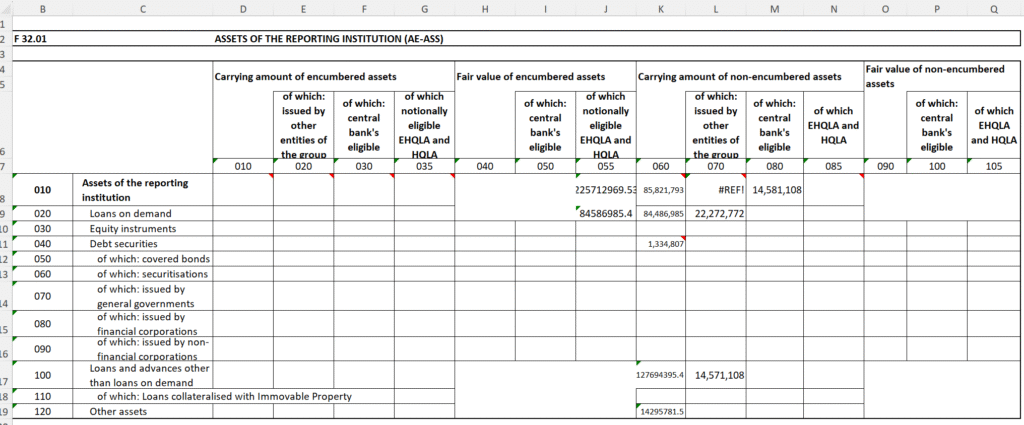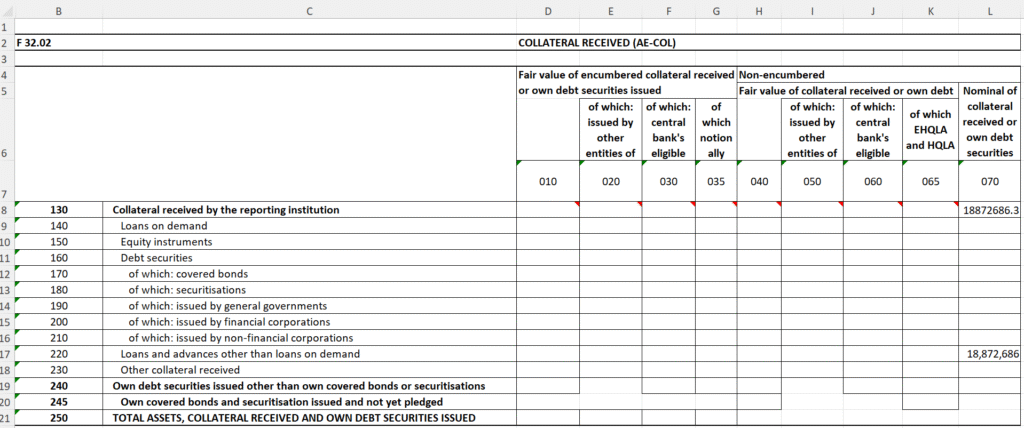Asset Encumbrance
Asset encumbrance reporting is a process that, under regulation (EU) No 575/2013 (CRR), mandates financial institutions to reveal information about their encumbered assets (i.e., pledged assets) to supervisory authorities. This reporting is planned to provide a comprehensive record of an institution’s risk description and to foster financial stability by allowing regulators to evaluate potential susceptibilities associated with asset encumbrance.
Updated 02 May, 2025.
Features of asset encumbrance reporting
- Reporting Requirements
Institutions are mandated to report on the value and structure of their encumbered assets, in addition to the natures of encumbrances influencing those assets. The reporting frequency and specific data requirements as stipulated in regulations, such as the European Banking Authority’s Implementing Technical Standards.
- Purpose of Reporting
The fundamental goal of asset encumbrance reporting is to improve transparency and comparability of financial risk profiles of institutions. This helps supervisors to identify potential risks associated with to asset encumbrance, such as funding risk and liquidity risk, and adopt appropriate supervisory measures.
- Encumbrance Ratio
A high asset encumbrance ratio rises liquidity and funding risk, as it reduces the pool of unencumbered, readily available assets
- Frequency
Reporting periods range from a quarterly, annual, to semi-annual basis, depending on the specific requirements and size of the institutions.
- Supervisory Scrutiny
Supervisory authorities utilize the reported financial data to scrutinize the level of asset encumbrance within the financial system and to evaluate the potential effect on financial stability. This assists them to identify institutions that are vulnerable to high levels of encumbrance and to make sure that they have adequate unencumbered assets to meet their obligations.
- Harmonization and Convergence
The European Banking Authority (EBA) plays a core role in harmonizing asset encumbrance reporting across the European Union. The EBA improve and sustains standardized reporting templates and instructions to guarantee consistency and comparability of data across various institutions and jurisdictions.
Examples of Encumbered Assets
Encumbered Assets are:
- Assets used as collateral for secured financing transactions, such as securities lending, repurchase agreements.
- Assets pledged as collateral for derivative transactions.
- Assets used as collateral for central bank funding.
- Assets in cover pools used for covered bond issuance.
Effects of Asset Encumbrance:
- Liquidity Risk
High levels of encumbered assets can mitigate a bank’s capability to evaluate funding in times of distress.
- Funding Risk
If a bank depends hugely on encumbered assets for funding, it may encounter hurdles in refinancing its liabilities.
- Losses for Creditors
In a distressed scenario, unsecured creditors may encounter higher losses if a bank’s assets are hugely encumbered.
- Reduced Financial Stability
High levels of asset encumbrance can bring forth financial uncertainty by rising the risk of systemic risk and contagion.
Asset Encumbrance Spreadsheets


